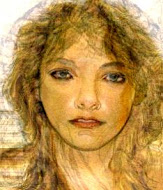Intro to Dragons
Everybody knows what a dragon is: an enormous, fierce, bloodthirsty creature appearing in fairy tales and legends as an accessory whose main function is to set off the bravery of the knight challenging him. The dragon is an obscure, mysterious character, described in broad terms, and is little more than foil to enhance the hero's valor.
Dragon is a legendary beast in the folklore of many European and Asian cultures. Legends describe dragons as large, lizardlike creatures that breathe fire and have a long, scaly tail. In Europe, dragons are traditionally portrayed as ferocious beasts that represent the evils fought by human beings. But in Asia, especially in China and Japan, the animals are generally considered friendly creatures that ensure good luck and wealth. According to some medieval legends, dragons lived in wild, remote regions of the world. The dragons guarded treasures in their dens, and a person who killed one supposedly gained its wealth. The English epic hero Beowulf died in a fight with a treasure-guarding dragon. In China, the traditional New Year's Day parade includes a group of people who wind through the street wearing a large dragon costume. The dragon's image, according to an ancient Chinese belief, prevents evil spirits from spoiling the new year. Another traditional Chinese belief is that certain dragons have the power to control the rainfall needed for each year's harvest.
However the dragon is something else. He is admirable, intelligent and educated creature, who leads a most interesting life. He has some fascinating characteristics in addition to those occasional glimpses we are given through fairy tale and legends.
In the world of fantastic animals, the dragon is unique. No other creature has appeared in such a rich variety of forms. It is as though there was once a whole family of different dragon species that really existed, before they mysteriously became extinct. Indeed, as recently as the seventeenth century, scholars wrote of dragons as though they were scientific facts, their anatomy and natural history being recorded in painstaking detail.
The naturalist Edward Topsell, for instance, writing in 1608, considered them to be reptilian and closely related to serpents:
"There are diverse sorts of dragons, distinguished partly by countries, partly by their quantity and magnitude, and partly by the different form of their external parts."
Personifications of malevolence of beneficence, paganism or purity, death and devastation, life and fertility, good or evil. All these varied, contradictory concepts are embodied and embedded within that single magical word.
The dragon has always been slandered and misjudged, persecuted and hounded by man, simply because they are different. Like so many other living beings, he has experienced death and persecution in the name of so-called superiority of civilized man. Perhaps, in the future, man will learn with the death of a single animal or plant species an irreplaceable asset - something more precious than all the wealth in the world - is lost. Only then will the Earth continue to be a brilliant blue jewel in the universe, for in i’ts heart will be locked the priceless treasure of the diversity of the species, and man will have recognized his duty to cherish every single one.
Our dragon populations have declined considerably in recent years. Not only have dragons been excluded from all neighborhoods and driven out of most states, but they are hated almost everywhere. This is usually due to the prejudice of humans, because of a dragon’s appearance and culture. This does not mean to say that no one is willing to join the fight for dragons rights. Recently there has been evidence of an increasing public tolerance of dragons. People are realizing the importance of dragons in the preservation of worldwide ecosystems and the protection of our faunal diversity represented my these magical beasts. Although dragons have little reason to believe in us, the least we can do is believe in them.
Dragons are one of the greatest of the otherworldly creatures. Although many people think they live only in books and myths, but in the spirit realm they are very real. There are many different kinds of dragons including Green, Blue, Silver, Gold, Platinum, Red, and others. Dragons can also come to the physical world in the form of vast fields of energies, apparitions, and in some rare cases they even mundane creatures. Not only are there different kinds of dragons, but there are dragonlike creatures. They include but are not limited to Draconcats, Dracondogs, and other dragon related creatures. Although these creatures technically aren't dragons, they are the closest related creatures and sometimes even pack together with them.
If you happen to sense a large energy field, chances are its a dragon. They are attracted by people with compatible virtues such as honor, sincerity, and courage. They also like people who are very interested and dedicated to dragons. There are even people who practice Dragon Magic, which is its own deified religion. Try talking to them if you sense them. If you can't speak out loud then try doing it to somewhat of an effect of telepathy. Although it takes practice to contact other people with telepathy, otherworldy creatures can be contacted with much ease
The Truth About Dragons
Despite popular belief, Dragons are not mean, evil, damsel eating monsters whose only purpose is to ravage villages and hoard gold. They are wise, ancient, and usually kind. Dragons do, however, avoid negative humans who might hurt or try to control them. If a human does try to hurt or control a dragon, they will wish they hadn't! If you try to hurt or control a dragon, there are great consequences. The most drastic of these is death, although it is rare, for most Dragons do not wish to kill or harm other beings.
Dragon Magic is not for beginners, and most certainly isn't for dabblers. Only those who are most sincere in their work with Dragons will succeed. Dabblers and those who are not sincere will suffer the consequences listed above. I hope that your experience with Dragon Magic is enlightening and delightful!
Different Types of Dragons
Dragons come in many different forms. Small, large, furry, scaly, some winged, some not winged, some with horns, some with antennae, and the list goes on. Listed below is a sample of the different types of Dragons.
- Air Dragons
- Earth Dragons
- Fire Dragons
- Water Dragons
- Dragons of Light
- Dragons of Darkness (not evil)
- Dragons of the Seas & Various Waters
- Dragons of the Mountains & Forests
- Dragons of Wind, Storm & Weather
- Dragons of Desert & Arid Regions
- Dragons of Fire & Volcanoes Dragons of Chaos & Destruction
- Guardian Dragons
- Dragons of the Planets
- Dragons of the Zodiac
For descriptions of the Dragons and more information, you must buy the book. It's called "Dancing with Dragons" by D.J. Conway
Disclaimer: No one involved in this blog or its contents may be held responsible for any adverse reactions arising from following any of the instructions/recipes on this list. It is the reader's personal responsibility to exercise all precautions and use his or her own discretion if following any instructions or advice from this blog.















No comments:
Post a Comment